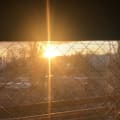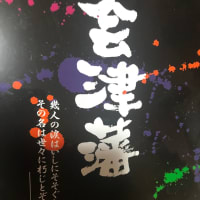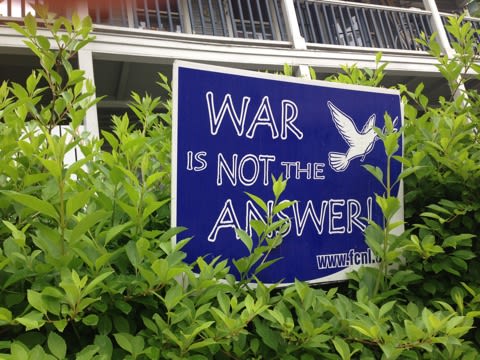
講演会場
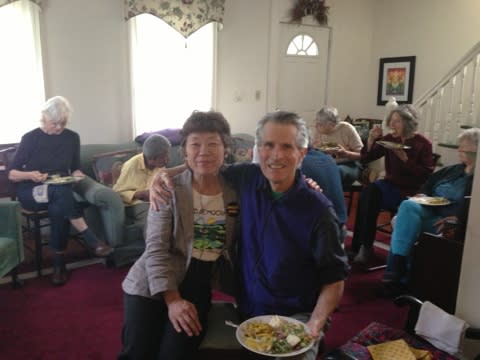
ケラー氏と
FukushimasLessons
Cautionary tale for Vt.Yankee,s neighbors
Among the speakers at a rcesent public forum in Southern California, titled
“Lessons from Fukushima Was Naoto Kan,the former prime minister of Japan.
Once a strong of nuclear power, Kan described how his thinking had completely
Changed following the Fukushima nuclear disaster that erupted in march 2011.
“I concluded that the only way to contain this risk was to create a society that does not rely on nuclear power,”’He said,later adding,”We have created a situation where we are standing on a precipice …Will we be able to survive?””At the same forum,Gregory Jaczko,former chairman of the U.S Nuclear Regulatory Commission(NRC), told the California audience that all 104 nuclear
power reactors inn the U.S.”’…have a safety problem that cannot be fixed…
(and) continuing to put Band-Aid is not going to fix the problem.”’ Closer to home ,50 residents of Greenfield and surrounding towns gathered on may 29 at Greenfield’s Second Congregational Church to hear an eyewitness
report concerning the continuing Fukushima meltdown.
Our speaker was Ms Chikako Nishiyama, avillage of the stricknreactors.
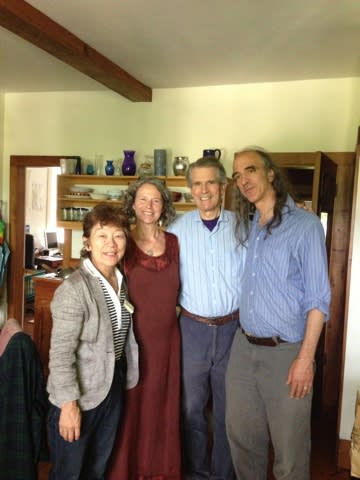
Nishiyama’s visit to Greenfield came about because on March 9 there was a vigil on the Greenfield town Common commemorating the twoyear anniversary of the Fukushima tragedy. Because Kawauchi is almost the same distance and direction from the Fukushima reactors as Greenfield is from the Vermont Yankee reactor(witch is the same age,make,and flawed design as the Fukushima
Ones),we unofficially declared Greenfield and Kawauchi to be “sisiter town.”
At the vigil, scores of people and later,dozens of students from Greenfield

Center School,signed a large message of sympathy and support to the people of Kawauchi.When informed of this ,Nishiyama was so moved by knowing that people
Halfway around the world knew and cared about the U.S.,and to Greenfield specifically,to personally receive our message.
Vicinity of a nuclear reactor, especially since Japan, like the U.S,had been considered among the world’s most advanced nations in terms of nuclear technology and safety.
According to Nishiyama, the residents and local officials of her area had been assured many and by the Japanese nuclear industry and did and federal government that an accident like Fukushima was virtually impossible and that if such an accident did occur,Japan’s sophisticated and frequently rehearsed emergency preparedness procedures would protect the surrounding population.
Nishiyama said it wasn’t at least 24 hours sfter the meltdown had begun that people in Kawauchi ,including local officials like herself, knew or was told what was happening at Fukushima.
At first, the government ordered everyone within one mile of the stricken reactors to evacuate, then within six miles, and soon thereafter within 12miles.
Due to continuing reactor meltdowns and explosions that spread highly toxic
Radioactivity in whatever direction the wind was blowing(creating radioactivity “hot spots”as far as 120 miles from the destroyed reactors),
Even people beyond 12 miles, including the residents of Kawauchi,were soon
Ordered to evacuate.
The ensuing evacuation, Nishiyama told us, created widesperead panic and chaos, with mile long lines at gas station as people tried to flee in their
Car as fast as they could, not knowing when, or it, they’d be able to go back.
One year later, the government declared that Kawauchi was safe enough for residents to return.
However, for many months only older people came back, while the younger ones,
Not trusting the government, did not.
Many of these younger residents and thire families, now referred to as the
“lost generation” of Kawauchi, are still refusing to return.
In the meantime, emergency workers clad from head to hoot in while radiation-
Protection suits, have been scraping topsoil off schoolyards and other public
Places, packing it into large, blue, plasticbags and storing them “temporarily” along roadsides in Kawauchi and else where.
Nishiyama showed us photos of great piles of these bags still there, including ones very close to her home.
What lessons can we learn from Fukushima?
One is that accidents once thought impossible can happen.
Another is that radiation from a nuclear accident doesn’t spread outward
In neat concentric circles but can be blown by the wind in unpredictable
Directions across great distances.
A third is that even the most dedicated local emergency preparedness workers,
Such as the ones we here are very fortunate to have, cannot prevent the kind
Of panic and chaos that is inevitable in the wake of a Fukushima-type accident.
The most important lesson, however, is the one drawn by Prime Minister Kan;
“The only way to contain this risk(is) to create a society that does not
rely on nuclear power.”
Randy Kehler lives in Colrain and has been an active member of the Safe &
Green Campaign whose mission is to close the Vermont Yankee reactor and replace its power with increased energy conservation and efficiency measures
Coupled with safe, renewable energy sources.
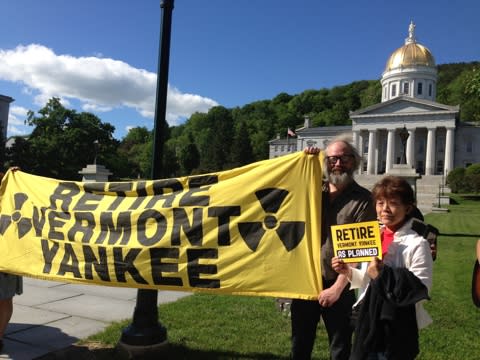
2021 9/1

